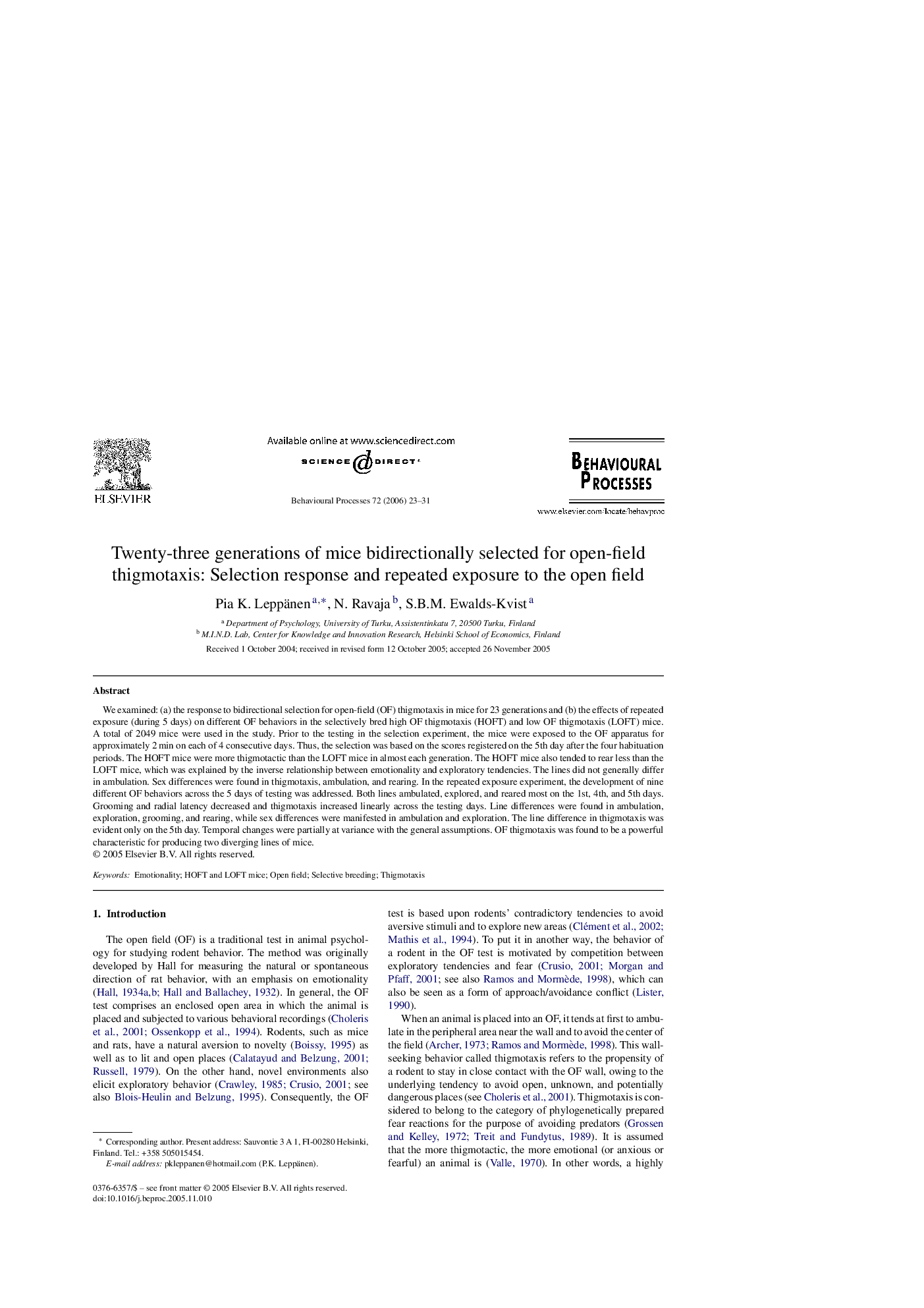| Article ID | Journal | Published Year | Pages | File Type |
|---|---|---|---|---|
| 2427969 | Behavioural Processes | 2006 | 9 Pages |
We examined: (a) the response to bidirectional selection for open-field (OF) thigmotaxis in mice for 23 generations and (b) the effects of repeated exposure (during 5 days) on different OF behaviors in the selectively bred high OF thigmotaxis (HOFT) and low OF thigmotaxis (LOFT) mice. A total of 2049 mice were used in the study. Prior to the testing in the selection experiment, the mice were exposed to the OF apparatus for approximately 2 min on each of 4 consecutive days. Thus, the selection was based on the scores registered on the 5th day after the four habituation periods. The HOFT mice were more thigmotactic than the LOFT mice in almost each generation. The HOFT mice also tended to rear less than the LOFT mice, which was explained by the inverse relationship between emotionality and exploratory tendencies. The lines did not generally differ in ambulation. Sex differences were found in thigmotaxis, ambulation, and rearing. In the repeated exposure experiment, the development of nine different OF behaviors across the 5 days of testing was addressed. Both lines ambulated, explored, and reared most on the 1st, 4th, and 5th days. Grooming and radial latency decreased and thigmotaxis increased linearly across the testing days. Line differences were found in ambulation, exploration, grooming, and rearing, while sex differences were manifested in ambulation and exploration. The line difference in thigmotaxis was evident only on the 5th day. Temporal changes were partially at variance with the general assumptions. OF thigmotaxis was found to be a powerful characteristic for producing two diverging lines of mice.
